Pediatric movement disorders can significantly affect a child's ability to control their movements, impacting their daily life, school performance, and overall well-being. These disorders may stem from physiological, psychological, or neurological causes and often require expert evaluation and treatment.
At New Jersey Pediatric Neuroscience Institute (NJPNI), our Pediatric Movement Disorders Center provides specialized care for conditions like spasticity, dystonia, chorea, tcs and ataxia in children. This article explores the most common movement disorders in children, their symptoms, and the importance of consulting a pediatric movement disorder specialist.
What Are Pediatric Movement Disorders?
Pediatric movement disorders refer to a range of neurological conditions that disrupt a child’s ability to perform coordinated, smooth, and purposeful movements. These disorders may include involuntary movements or difficulties initiating or controlling voluntary motions.
Some childhood movement disorders start in infancy, while other disorders present in toddlers, or even later in life.
Some movement disorders are caused by genetic or metabolic factors, and others may be caused by brain damage caused by premature birth, hyperbilirubinemia or jaundice, trauma, tumors or infections.
Common Pediatric Movement Disorders
Spasticity in Children
Spasticity affects a child’s coordination and balance. Children with this disorder may experience:
- Tightness in the muscles
- Toe walking
- Unsteady walking
- Muscle contractures
- Difficulty controlling hand movements
- Challenges maintaining posture
Chorea in Children
Chorea affects a child’s coordination and motor control. Children with this disorder may experience:
- Uncontrolled movements
- Difficulty with fine and gross motor skills
- Excessive mvement
- Difficulty controlling hand movements
Ataxia in Children
Ataxia affects a child’s coordination and balance. Children with this disorder may experience:
- Unsteady walking
- Difficulty controlling hand movements
- Challenges maintaining posture
Ataxia often stems from genetic conditions, infections, or other neurological disorders. Identifying and addressing ataxia early is essential for helping children develop and thrive.
Parkinsonism in Children
Although Parkinsonism is commonly associated with older adults, children can also experience this rare condition. Pediatric Parkinsonism symptoms include:
- Tremors
- Muscle stiffness
- Bradykinesia (slowed movement)
These symptoms can make simple tasks like writing, walking, or playing challenging. Early diagnosis and specialized treatment are crucial to improving a child’s quality of life.
Get Specialized Care at NJPNI: The Pediatric Movement Disorders Center
When it comes to your child's health, you want the best care available. NJPNI's Pediatric Movement Disorders Center is a specialized facility dedicated to diagnosing and treating pediatric movement disorders with expertise and compassion.
How Are Pediatric Movement Disorders Diagnosed and Treated?
A comprehensive, multidisciplinary approach is essential for managing pediatric movement disorders effectively.
Early Diagnosis
Recognizing unusual movements or coordination issues early can lead to timely intervention and better outcomes.
Specialized Evaluation
Consultation with a pediatric neurologist or movement disorder specialist is critical. These experts conduct in-depth evaluations to determine the underlying cause of the disorder.
Diagnostic Tools
Tests such as brain imaging, genetic analysis, and electromyography (EMG) help pinpoint the root cause of the disorder and guide treatment decisions.
Personalized Treatment Plans
Treatment plans are tailored to each child’s specific needs and may include:
- Medications to manage symptoms
- Physical and occupational therapy to improve motor skills
- Surgical interventions in severe cases
Long-Term Support
Movement disorders often require ongoing management. Regular follow-ups and adjustments to the treatment plan are necessary to ensure optimal outcomes.
Family Involvement
Parents and caregivers play a key role in therapy exercises, emotional support, and medication adherence.
Why Choose NJPNI’s Pediatric Movement Disorders Center?
The Pediatric Movement Disorders Center at NJPNI is a trusted resource for families seeking expert care for children with movement disorders. Here’s what sets us apart:
- Expert Team: Our board-certified pediatric physiatrists, neurosurgeons and neurologists specialize in diagnosing and treating complex movement disorders.
- Advanced Diagnostics: We utilize cutting-edge technology for accurate and early diagnosis.
- Comprehensive Care: Our multidisciplinary approach includes collaboration with physical therapists, occupational therapists, and genetic counselors to ensure holistic treatment.
- Individualized Attention: Every child is unique, and our personalized care plans reflect their specific needs.
- Family-Centered Approach: We provide guidance and resources to empower parents and caregivers throughout the treatment journey.
When to Seek Help From a Pediatric Movement Disorder Specialist
If your child shows any of the following signs, it’s time to consult a specialist:
- Persistent tremors or involuntary movements
- Difficulty with coordination or balance
- Noticeable delays in motor skill development
- Recurrent issues with muscle stiffness or slowness
Early intervention can make a significant difference in managing symptoms and improving your child’s quality of life.
Conclusion: A Path to Improved Movement and Well-Being
Pediatric movement disorders can be challenging, but early diagnosis and expert care provide hope and improved outcomes for children. At NJPNI’s Pediatric Movement Disorders Center, our compassionate team is committed to helping children overcome these challenges and achieve their full potential.
If you suspect your child may have a movement disorder, don’t wait. Contact NJPNI today to schedule a consultation and learn more about how we can support your family. Your child’s health and happiness are our top priorities.


